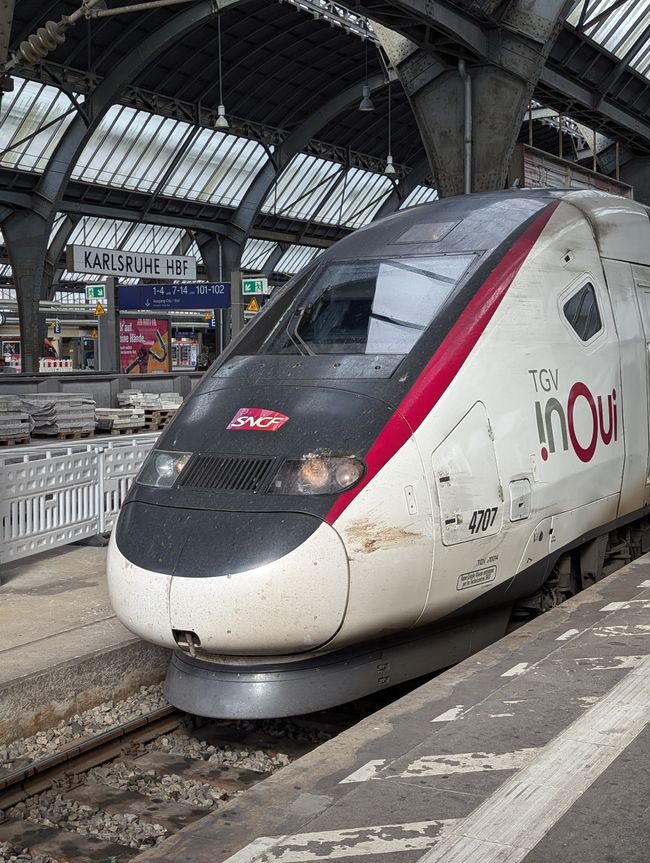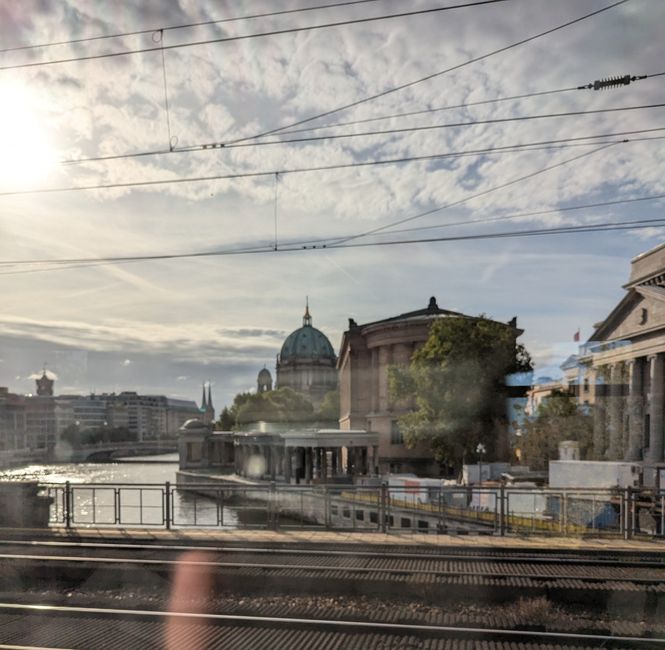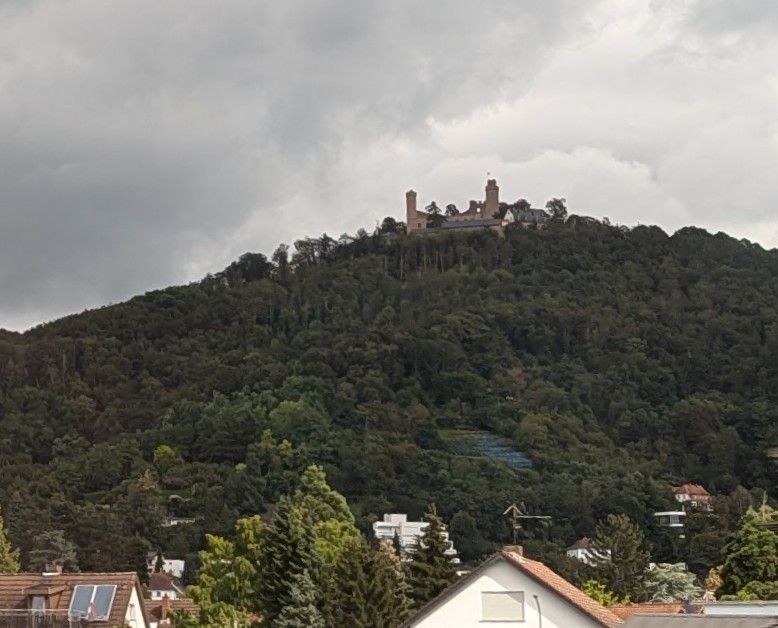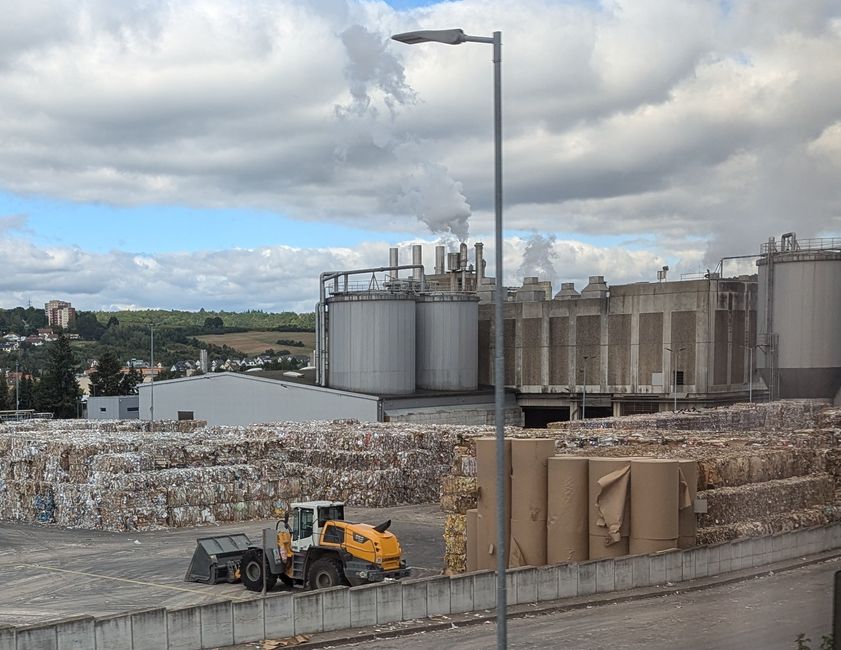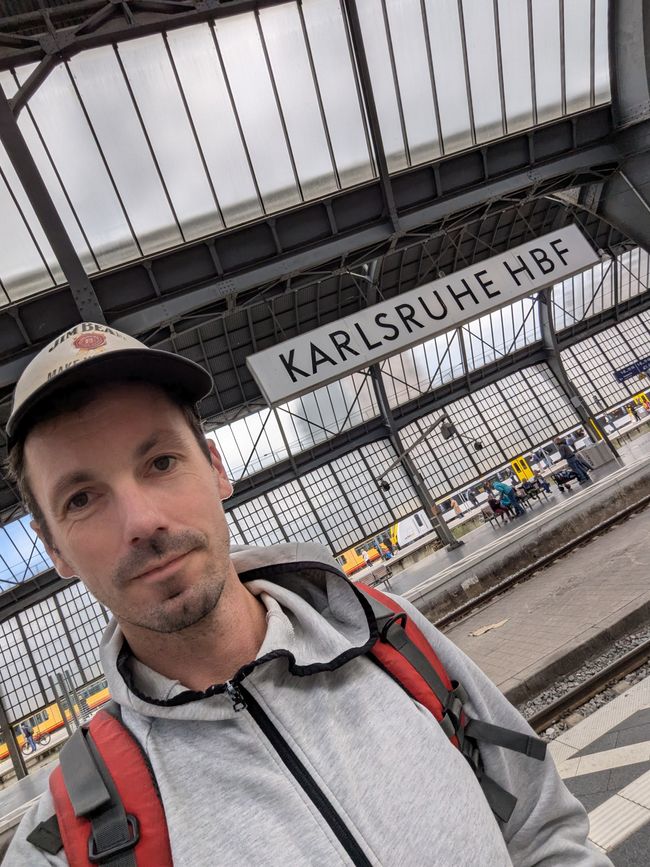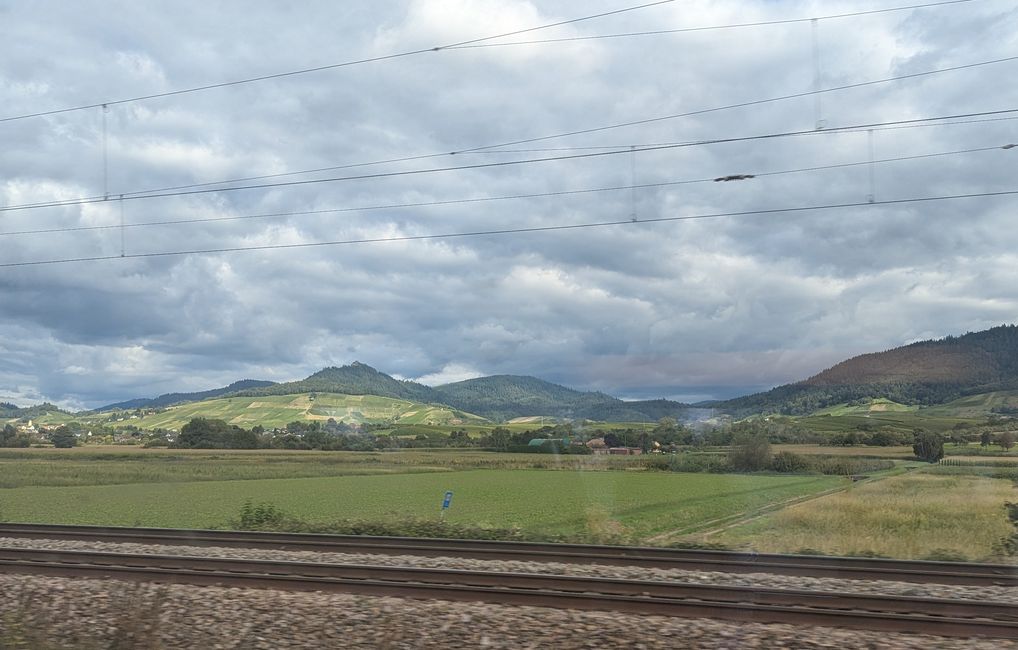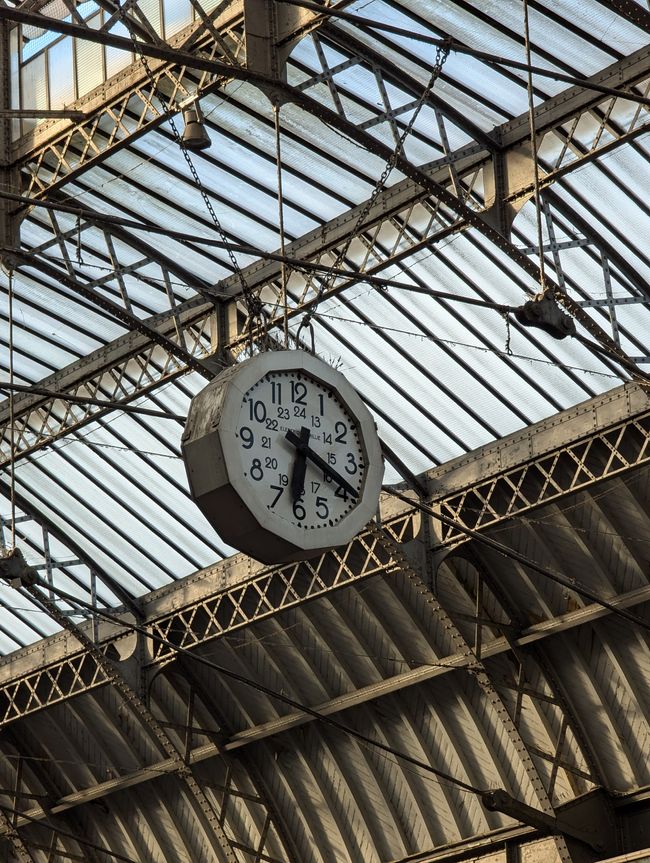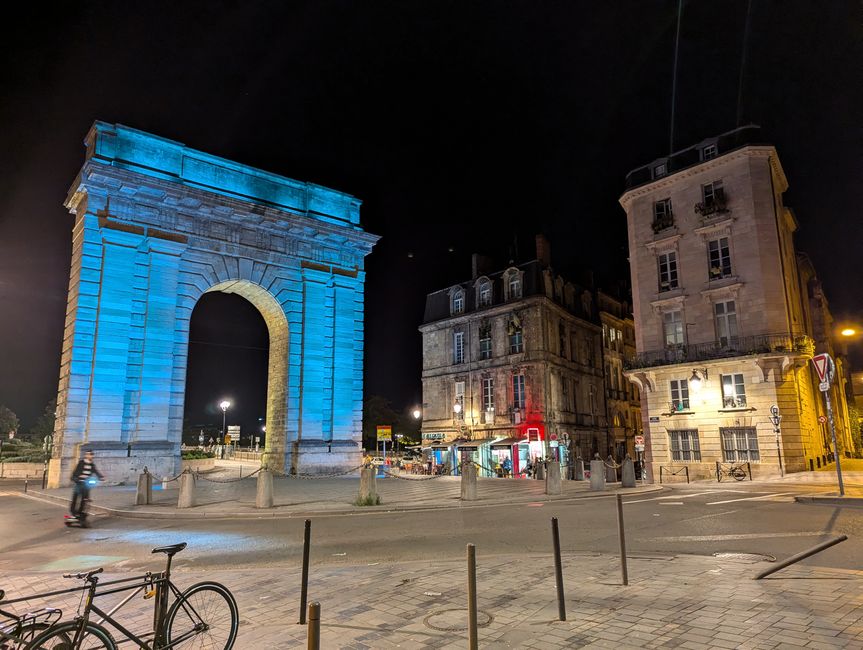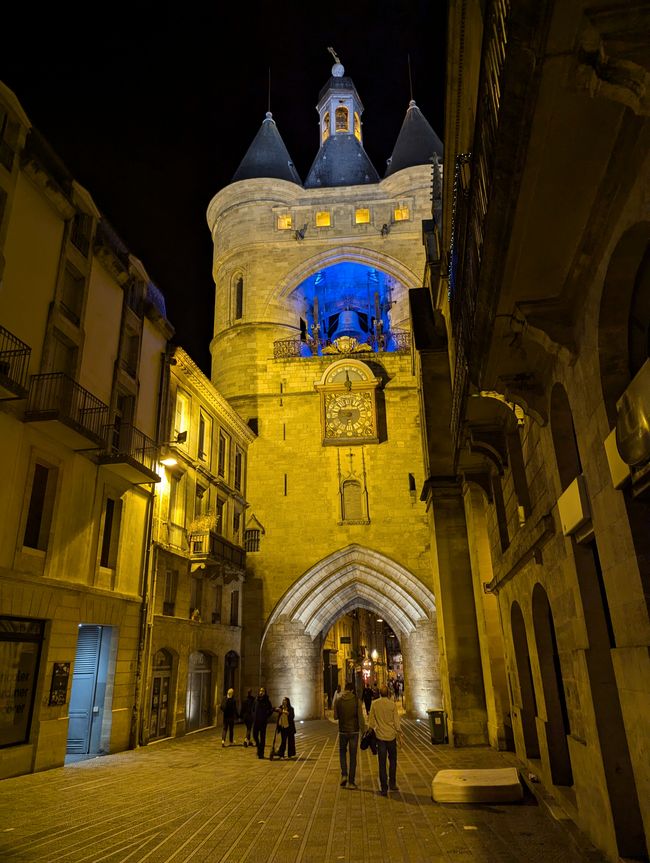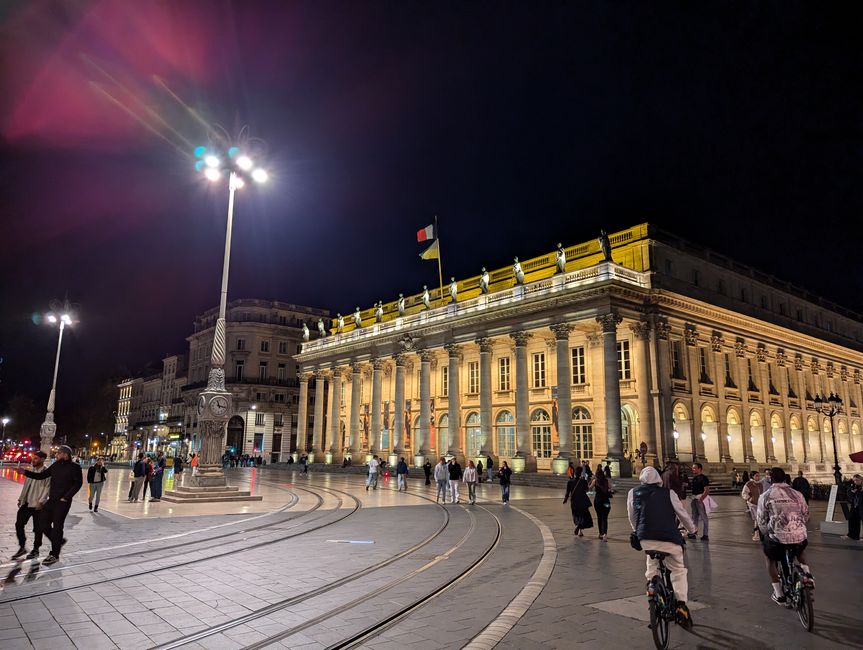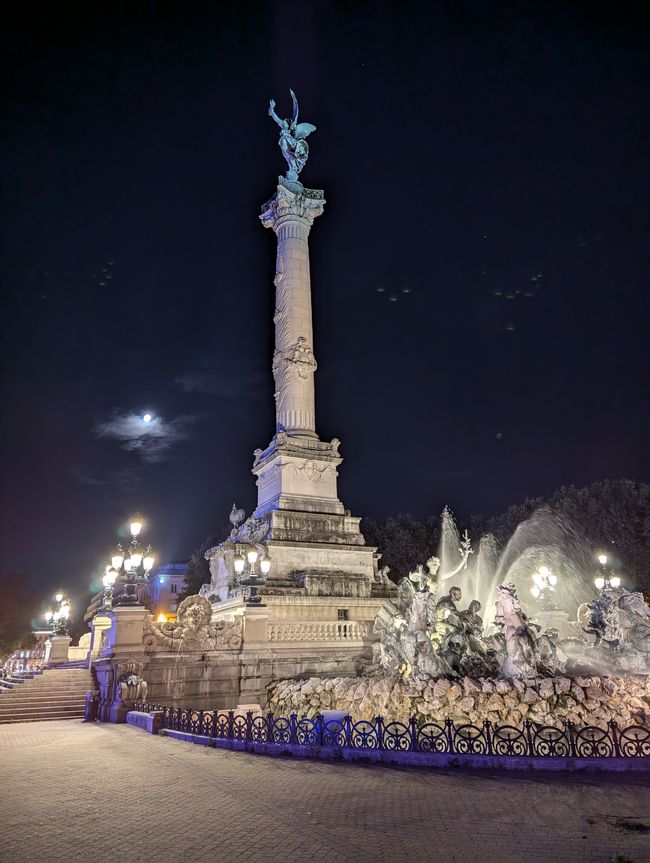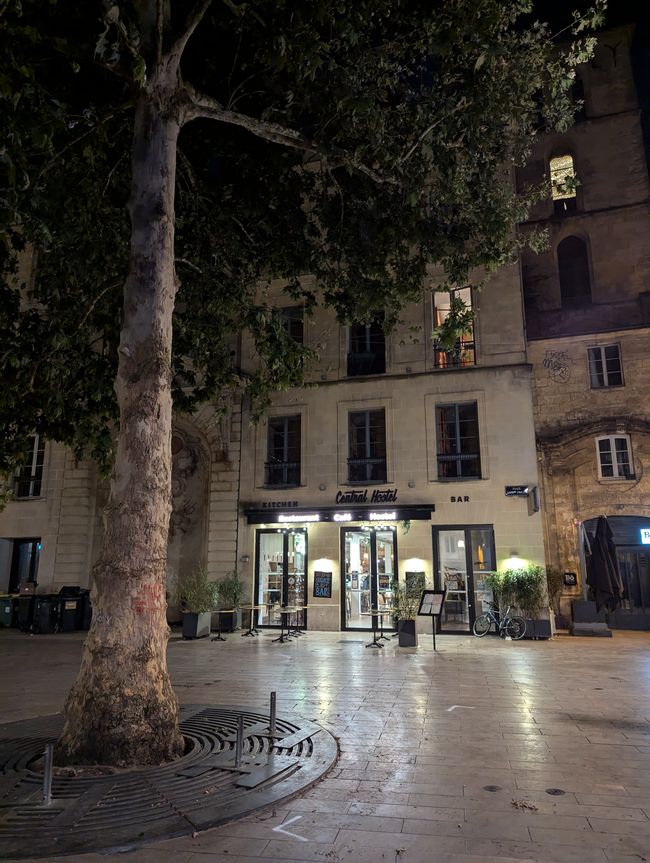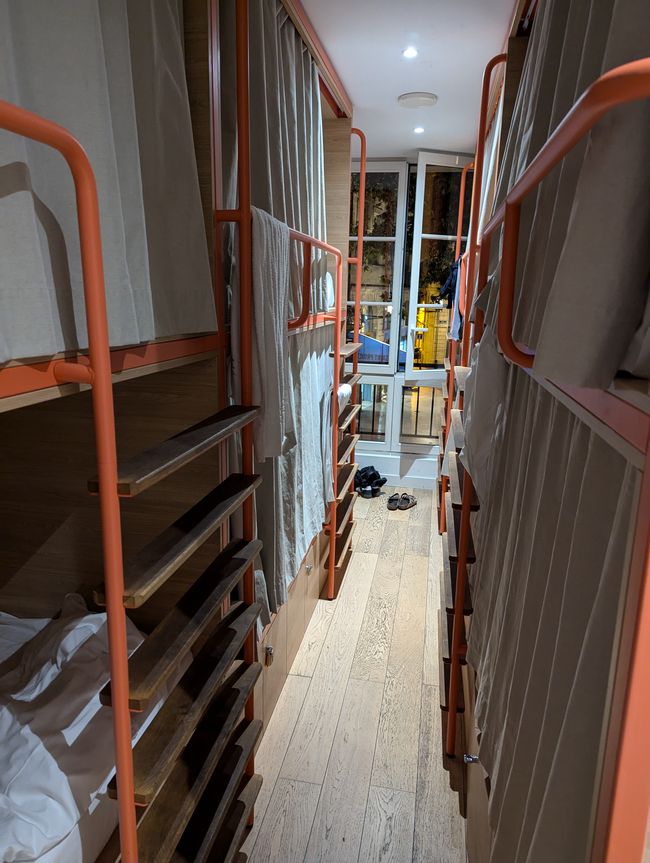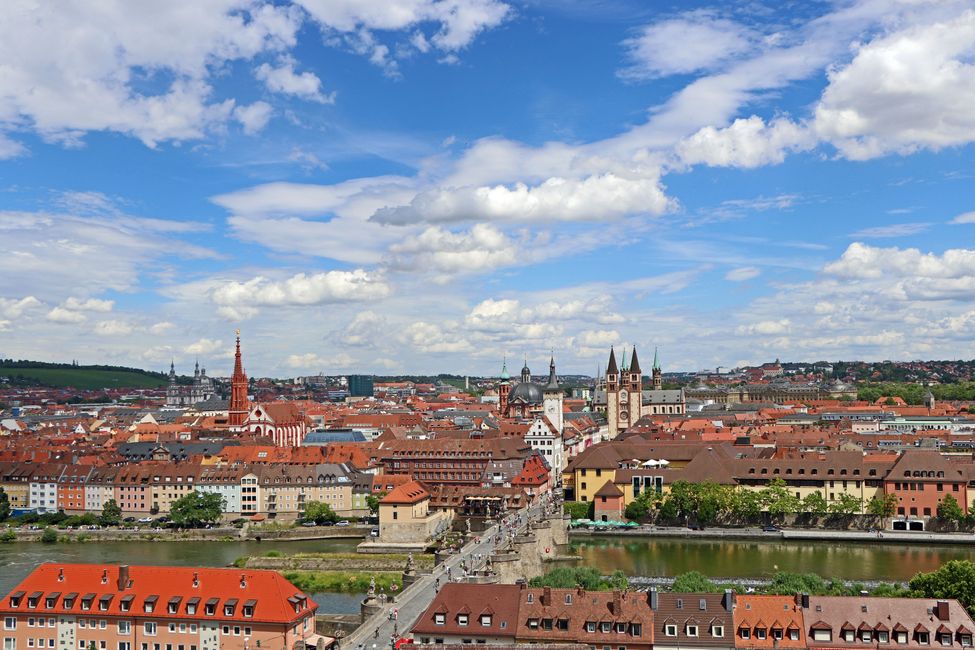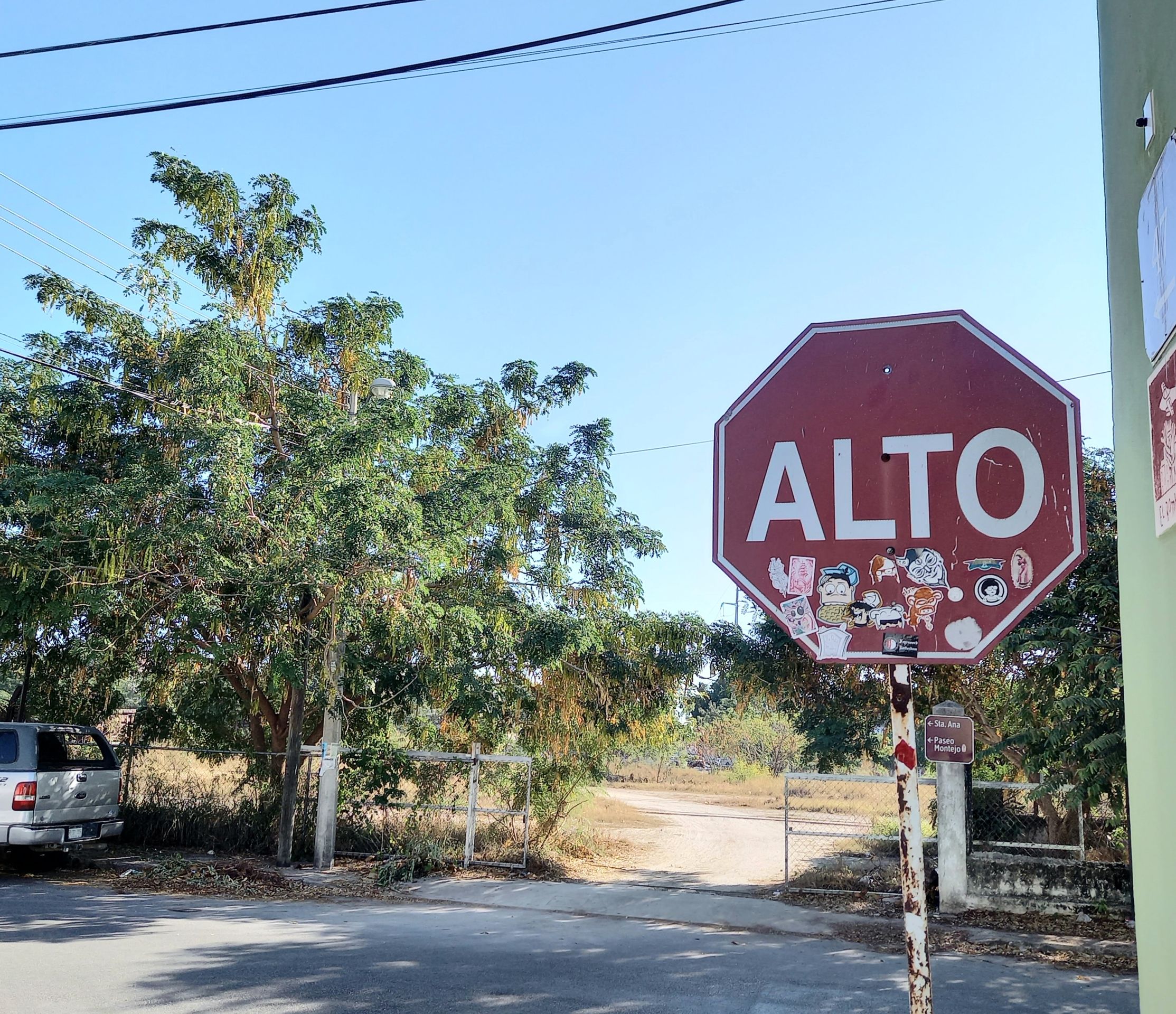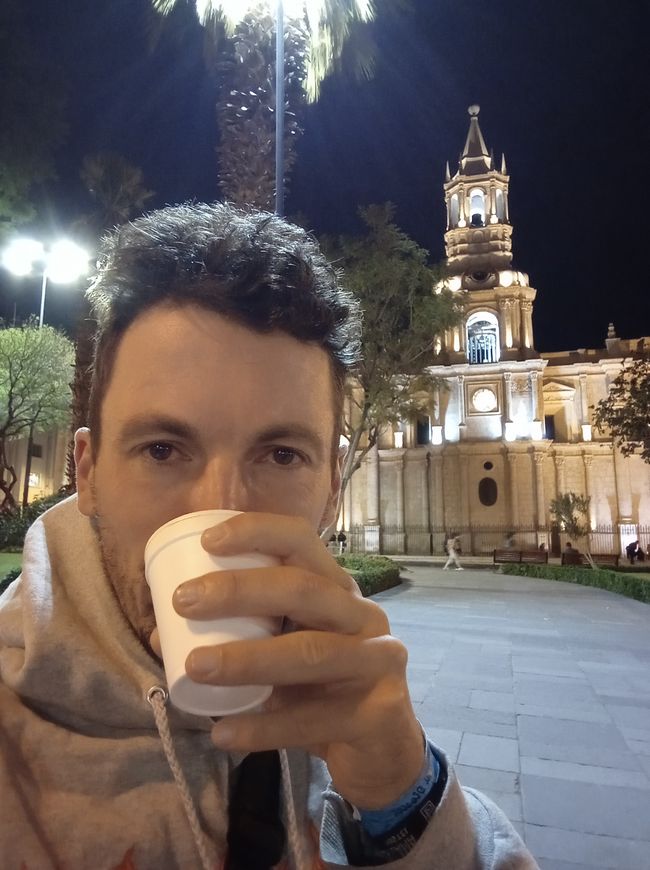Slow travel, that was my answer to the question of why travel by train. Decreasing speed at an average travel speed of around 150 km/h with the ICE. I enjoyed legroom, my own coffee from a thermos, could rummage through my luggage anytime, play on my phone, and let my gaze wander out of the window.
My aversion to airports and airlines was only heightened by the common belief that flying is the only option. The trip from Berlin to Bordeaux taught me otherwise once again. In nine hours I reached Paris, for 85,- with a transfer in Karlsruhe. From Gare de l'Est, the Paris Metro went directly to Gare Montparnasse in the south of the city. From there, the train took two hours to Bordeaux for 45,-. All connections were made smoothly, on board it was very calm, without loud groups, whiny children, constant phone users, or any other stressors.
An additional advantage of this gentle way of traveling is the view of the land and landscape. Over Leipzig and Erfurt, we continued to Hesse, that strange federal state in central Germany, past castles and mixed forests, through Fulda, over the Neckar and Main rivers. A bit of everything, Hesse, the Saxony-Anhalt of the West, home of the Brothers Grimm and electoral homeland of Bernd Höcke before he moved on to Thuringia. Then came Frankfurt and Darmstadt.
In Karlsruhe, I had two cold drinks at the station and transferred to the TGV, less elegant than the ICE, but with included seat reservation, designated phone zones at the entrance, and an increased average speed of 250 km/h. Without stops, Paris followed directly after Strasbourg. After crossing the Rhine, I went through the Seine with the Metro in Paris and on the last leg then at dusk the Loire near Tours.
At 9 PM I reached Bordeaux, then the old routine: city walk, check-in at the hostel, dormitory room, unpacking and repacking, the essentials, then a beer and considering what to do next. It was Saturday evening.
